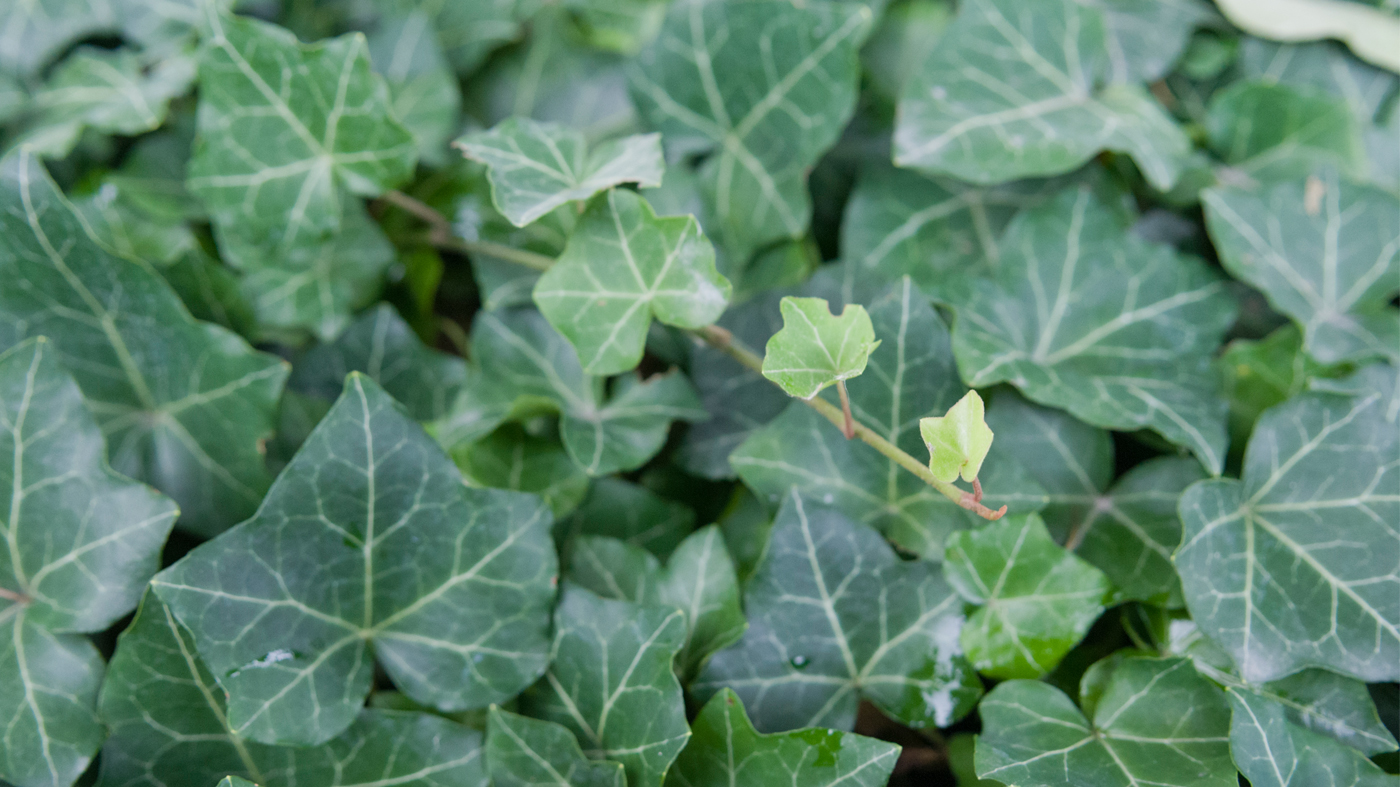

Ivy, English
Hedera helix

In a discussion of ivy, it is important to distinguish between English ivy, the trailing or vining plant form belonging to the genus Hedera, and Boston ivy (Parthenocissus tricuspidata), the vine often found growing on brick houses, as well as Wrigley Field. English ivy is a truly versatile plant. It is used as a ground cover, in topiary displays, in hanging baskets, or sprawling over a windowsill as a houseplant. There are many types of ivy, ranging from rampant climbers to tiny miniatures. Most of them are tolerant of extreme conditions and can survive shade, poor soil, and atmospheric pollution.
English ivy (Hedera helix) and its many cultivars belong to the ginseng family (Araliaceae). There are more than 400 varieties of English ivy in cultivation, but only a few of these are hardy as outdoor plants in the Chicago area. The rest can be planted as houseplants here. English ivy is found in the wild from Japan to the Azores and from Scandinavia to North Africa. Its preferred habitat is a shady or semishaded woodland, and its natural growth habit is a creeping ground cover. Available in all shades of green, English ivy is also found in gray, yellow, cream, pink, and purple. The leaves often display interesting patterns of streaking, marbling, or veining. In milder climates, variegated forms can reflect light even in the darkest, shadiest corner of the yard.
In autumn, the flowers of English ivy become visible. They are tiny and greenish yellow, soon followed by blue-black berries. When English ivy begins to flower, the leaves change their shape from the pointed lobes of the juvenile stage to the more rounded lobes of the adult stage.
Climbing English ivy adds a unique vertical dimension to gardening. Through the use of its many rootlets, it clings to brick, mortar, wood and stone and becomes virtually a maintenance-free plant. Fences, pillars, trellises, and posts of all sorts are perfect forms against which ivy can grow. It is perfectly suited to a north wall with the exception of the yellow-leaved varieties and those with yellow variegation. These types need light to bring out their color. 'Buttercup' and 'Goldheart' are varieties that should be grown on an east or west wall.
In open, exposed sites, English ivy is better grown as a ground cover than a climbing vine. Extreme dieback might occur when the vine is exposed to the bitter cold and wind often associated with midwestern winters. On a protected, warm wall, however, this vine can perform admirably.
When planting the climbing English ivy, space the plants 2 feet away from the wall and keep 1 to 2 feet between individual plants. Autumn and spring are the best planting times. Water well during the first year and mulch to keep down competitive weeds.
As a ground cover, English ivy grows in difficult spots where other plants would fail. It is a good choice beneath shrubs or trees, covering stumps or climbing a steep hillside. While many of the English ivy cultivars available are not winter-hardy here, 'Thorndale' is particularly recommended for midwestern gardeners.
As an outdoor annual container plant, English ivy combines beautifully with any colorful annual or perennial. Its trailing habit complements arrangements in hanging baskets, decorative containers, or window boxes. A few cultivars suitable for pots include 'Brokamp', 'Cascade', 'Ceridwen', 'Domino', 'Irish Lace', and one of the best variegated forms, 'Sagittifolia Variegata'. Because pots tend to dry out quickly in summer, water every day and use a dilute fertilizer every two weeks.
When English ivy is grown indoors, it will prefer cooler temperatures of 45 to 60 degrees. Locate in bright indirect light and try to maintain a humid environment around the plant by daily misting. Interestingly, English ivy is often touted as an environmentally beneficial plant because it neutralizes benzene, a carcinogen present in paints, solvents, and cigarette smoke.
Ivy is easily propagated by cuttings taken in the fall. Rooting is quick when the cuttings are planted in a peat and sand mixture or a ready-mixed potting compost. Some gardeners place small plastic bags over the newly planted cutting to preserve moisture, taking care that the sides of the bags do not touch the leaves.
In winter, you may think of English ivy as the decorative addition to your houseplant arrangement or the lovely little-leaved variety as part of a topiary. Remember too that there are larger-leaved varieties that are perfect for accenting outdoor structures and serving as an evergreen ground cover.

